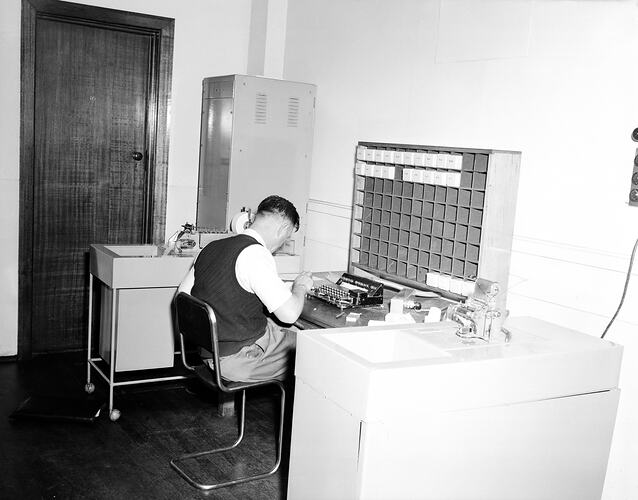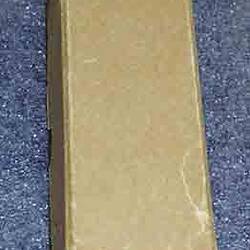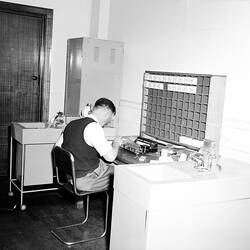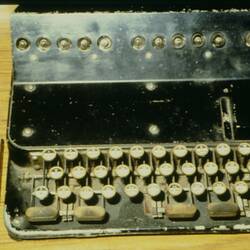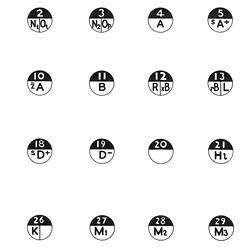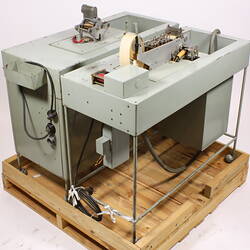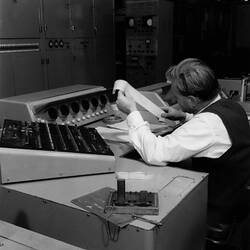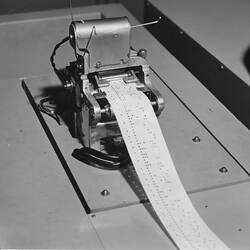Summary
Keyboard, part of the program preparation equipment for CSIRAC (previously CSIR Mk 1).
The keyboard was used to edit 12 hole paper tape.
Initially, the CSIR Mk1 used punch card technology for input and output. This was replaced by 12 hole paper tape technology sometime between 1951 and 1955. Punch card technology was considered unrelaible for CSIR Mk 1 but the reason for this is not known. Incidentally, punch cards were much easier to edit than 12 hole paper tape, which had to be reproduced again completely if there were more than just a few errors. (12 hole paper tape was introduced because there 12 holes down a punch card).
A 32 key paper tape punch was built for preparation of programs for CSIRAC. The keyboard was connected to this paper tape punch. The program preparation was carried out independently of the computer. The program was keyed and punched out onto tape. If a mistake had been made when preparing a 12 hole paper tape and a new hole was necessary, it could be made by inserting the tape into the base of the12 hole hand punch, lining it up and using a hand punch (a stylus) to punch a hole where required. Coloured plastic tape was cut out to cover holes that should not have been there (coloured so it was opaque to light ). The paper tape was then fed into the computer. Blocking holes in 5 hole paper tape was virtually impossible because the tape would be caught in the reader; the mechanism was tighter and faster (about 100 characters per second) than the 12 hole tape reader (about 10 characters a second).
A 12 hole paper tape library of routines was established so that programs and routines could be re-used. These also included sub-routines that could be used in combination with other sub-routines and/or part of a larger program. The library was stored in pigeon holes in the form of paper tape rolls packed four to a box. Library tapes were distinguished by having an extra row of holes, which a paper tape reader ignored. Insertion of the extra line of holes was restricted to staff, probably using a switch to allow insertion of the extra row of holes
A master copy of a sub-routine could be used to check a copy made with the editing equipment. The copy and master were held upo to the light and checked that the holes matched. This could be done to check copies of any program, not just ones from the library. Sometimes, a paper tape became so corrected, a clean copy was made.
The date range (1955 - 1964) is given to indicate that changes were made to the structure and circuitry over the period of CSIRAC's working life.
More Information
-
Collection Names
-
Collecting Areas
-
Acquisition Information
Donation from Commonwealth Scientific & Industrial Research Organisation (CSIRO), Frank Hirst - University of Melbourne (The), Mar 1965
-
Place Used
University of Melbourne (The), Parkville, Greater Melbourne, Victoria, Australia, 1955-1964
-
Place Used
Sydney, Greater Sydney, New South Wales, Australia, pre 1955
-
Classification
-
Category
-
Discipline
-
Type of item
-
Exhibition Collection Management
315 mm (Length), 285 mm (Width), 110 mm (Height)
-
References
[Link 1] - accessed 6 October 2008
[Book] Deane, John. 1997. CSIRAC Australia's First Computer. 46., First, 46 Pages
-
Keywords
Computers, Computing, CSIRAC (Computer), Making History - CSIRAC
